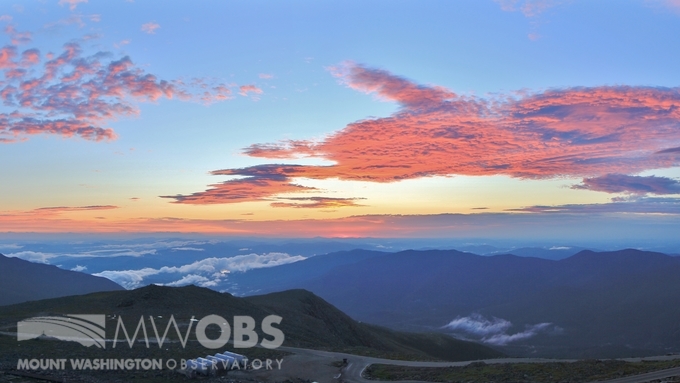Picture Perfecting
2016-07-24 18:22:20.000 – Ryan Knapp, Weather Observer/Staff Meteorologist
If you’ve ever visited the White Mountains, you know how beautiful and photogenic they are. I decided to check out some of the other images that others have captured, so I checked out the tag
#WhiteMountains on
Instagram today and found several pictures from the past day, week, month and beyond. Several of them I liked (literally, I gave them a double-tap), however, there were a few that raised an eyebrow; and I am not the only one to notice some questionable photographs as several photographers I follow have pointed out. But I can’t get mad as sometimes people just don’t know any better. So I thought I’d point out a few things to help people make better decisions when hiking and photographing in the White Mountains.
1. Wildlife – never cause stress to an animal for the sake of a picture whether it is a bug, a rodent, a bird, or a larger mammal. Stresses can be (but are not limited to) chasing, cornering, poking, yelling, throwing objects, or surprising an animal. Let them enjoy the environment and photograph them from a safe distance. And please do NOT feed them. They are not starving; worse, if you feed them and alter their diet, they could potentially get sick or worst. Gray Jays and squirrels are notorious for this behaviour – they are not pigeons in a park, so please avoid feeding them or any other wildlife you come across.
2. Leave what you find – Plants, animals, rocks, and artifacts should be left in place for others to enjoy. While there are plenty of pretty flowers around the mountains, some species of flowers (in the Alpine Zone) are very sensitive and/or endangered of extinction. Rocks are also a popular thing people move or remove. An example I see people disturbing – cairns. If a rock is part of a large pile of rocks about chest high, those are called cairns and are critical to navigation by hikers in the fog and during the winter months. These are not art installations, so please avoid removing rocks from them or building your own nearby.
3. Stay off the “grass” – In general, if hiking in the White Mountains, if it is green, avoid stepping on it. While it looks like just standard grass, the ground is also made up of mosses, herbs, lichen, forbs, dwarf heath, Highland rush, and Bigelow sedge (‘Sedges have edges, rushes are round, and grasses have joints’) just to name a few. Some species can make a quick rebound but some, if stepped on, especially repeatedly, can die off. So please stick to the designated trails and if you have to venture off-trail, rock hop like a kid playing “the-ground-is-lava.”
4.
No camping – There is NO camping within the boundaries of
NH State Park on the summit of Mount Washington. Beyond here, there is NO camping in the Alpine Zone of the White Mountains outside of winter. Additionally, there is also NO camping in places for many other trails, rivers, creeks, lakes, ponds, huts, etc in the mountains. For all the areas that have restrictions, you can click
HERE. And please avoid faux-camping too – this is when you pose a tent and make it look like you camped at a location. This goes back to #3, by setting up a tent even to pose a shot, you are trampling or placing an object on alpine vegetation possibly damaging or killing it. Even if posed on rocks, if someone sees you doing this in a picture, they will rarely read a description and might think that camping above treeline is acceptable behaviour and perpetuate the trend themselves.
5. No fires – Camping and fires go hand in hand. So if you can’t camp in a location, you can’t have a fire (charcoal or wood) either. Above treeline this is especially true since there is no downed wood to burn. Those little trees/shrubs near treeline, those are misshapen fir and black spruces that are called “Krummholz” (German for “twisted wood”). These little trees can be several hundred years old and take a long time to recover as they only grow a tiny amount each year. If you are in an area below the Alpine Zone where fires are permitted, keep the fire size manageable and extinguish coal thoroughly prior to leaving.
6.
ETC – Two big things that seem popular on Instagram that should be avoided in the White Mountains – burning steel wool and smoke bombs. Burning steel wool at night and spinning it around makes light trails on long night exposures with sparks flying off in all directions. It makes for interesting photography but sparks from the steel wool have been known to cause forest fires or burning of buildings, boats, etc. While forest fires are a bit rare in New Hampshire, they do occur especially when dry like most of
New England currently is. So avoid being the cause of a potential forest fire. Another trend inline with fire is smoke, or smoke bombs which seem to be quite popular on photo sharing sites currently. While these might seem harmless, there are a few things to be mindful of. First, you are setting off a smoke bomb in an ecosystem or the home of animals, birds, insects, plants, etc. So before setting one off in their home think, would you set one of these off in your home? Additionally, growing up out west, if I saw smoke it either meant forest fire or a distress call. So out west where fires run rampant and areas are a lot more remote, I was taught “Smoke is no joke – call 911”. So avoid being the cause of false fears of fires or distress calls.

Ryan Knapp, Weather Observer/Staff Meteorologist





